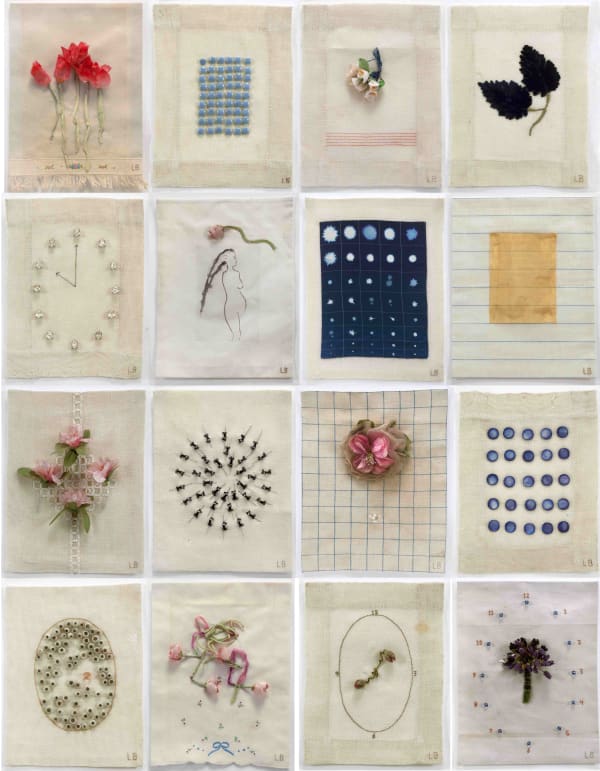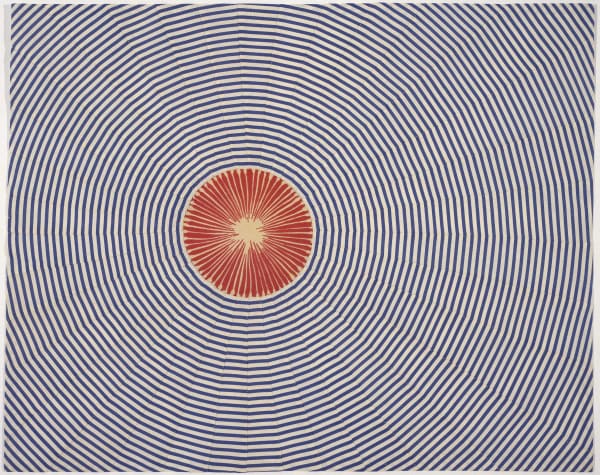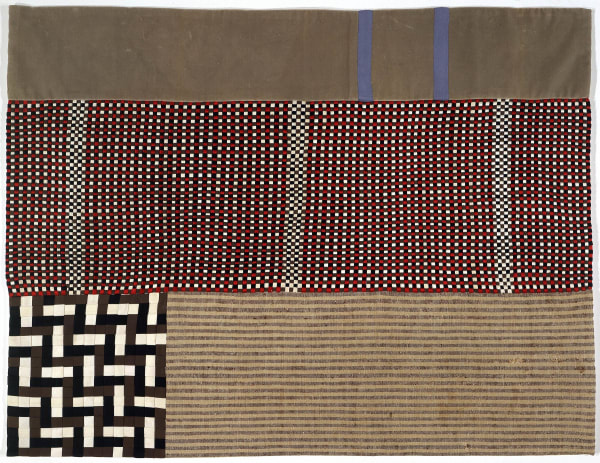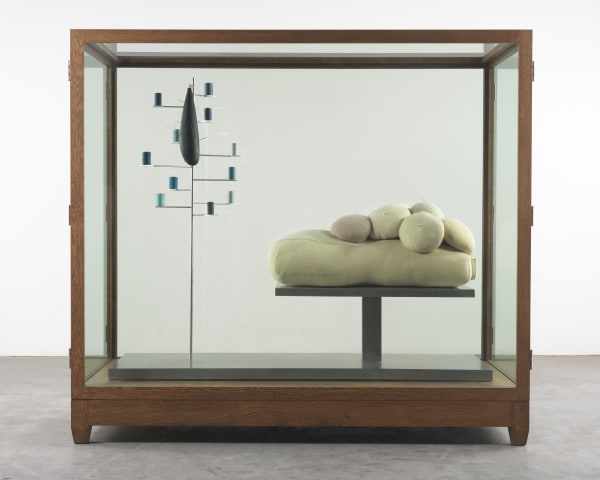Louise Bourgeois: The Fabric Works
Archive exhibition
-
OverviewCheim & Read is pleased to announce an exhibition of works in fabric by Louise Bourgeois. Dating from 2002 – 2010, Bourgeois’s fabric “drawings” - assembled from discarded clothes, sheets, towels and similar material from her personal collection - became a central focus in the last decade of her life. Significant in their own right for their formal invention and beauty, the drawings constitute a parallel body of work to that of her fabric sculptures.
Bourgeois was born in Paris in 1911. She moved to New York in 1938 and lived in the city until her death last year at age 98. Her works on fabric are emblematic of certain themes: marriage, motherhood, sexuality, femininity, domesticity. This focus on the familial results in work of intense psychological complexity, exposing relationships and hierarchies related to female identity and its opposite (male/female, mother/father, organic/geometric, rigid/pliable). Coinciding with an inclination, at old age, to stay closer to home, Bourgeois’s late fabric works provide a sense of introspection – her wardrobe and linen closet became representative of memory. As Bourgeois has stated, “Clothing is…an exercise of memory. It makes me explore the past…like little signposts in the search for the past.” The re-appropriation of her husband’s handkerchiefs, stained tablecloths and napkins, and worn dresses from all phases of her life infuses the work with a confessional, talismanic aura.
Bourgeois’s use of fabric also references her personal history. She grew up in her parent’s tapestry restoration business, her childhood surrounded by the reparation of 17th and 18th century textiles. Bourgeois’s peripatetic, philandering father sought out fragmentary, often damaged tapestries, while her mother, patient, reasonable, and, as Bourgeois notes, more “scientific,” would match their colors, dye new wool and painstakingly re-weave them. Bourgeois was a valued participant in the process – beginning at age 8 she drew in missing sections needing repair, and at 15 her parents took her out of school so that she could have more professional experience in the family business. Bourgeois’s later fabric collages and assemblages – their many disparate pieces assembled and sewed together – attest to the early influence of this restorative process, as well as to the conceptual and psychological connotations of the words associated with it: cut, unravel, weave, knot, stitch, mend. Bourgeois said, “I always had the fear of being separated and abandoned. The sewing is my attempt to keep things together and make things whole.”
Some of Bourgeois’s works, as in the stitched three-dimensional sculptures, evoke the corporeality of the body and its fetishistic associations, while others, like empty dresses suspended from hangers, are ghostly in their absence of the wearer. Often incorporated within large-scale sculptural installations (the Cell series, for example), fabric components contributed to a larger narrative. Bourgeois’s two-dimensional fabric “drawings,” are more abstract; made from discarded clothing, the deconstruction of the original garment eliminates an overt reference to the body. Instead, layers of color, texture and pattern are placed in careful, sometimes intricate, juxtaposition, the associations with Bourgeois’s biography intertwined with the visual punch of their geometric compositions. Her concerns, however, remain recognizable: webs, spirals and vertiginous forms dominate, skewing the modernist grid. Allusion to landscape plays an important role (see “The Waiting Hours,” 2007, and the cloth book titled “Dawn,” 2006), as do the additions of orifices and sac-like elements. Color provides lyrical continuity. As Germano Celant notes, the works also reference art historical precedents; he cites the craft-oriented explorations of the Russian Supremacists and the Italian Futurists, and the “rational formality” of modernist Bauhaus textiles, to which Bourgeois’s woven works seem most closely aligned (Anni Albers provides an apt comparison).
A sculptural installation from 2010 brings many elements of Bourgeois’s fabric work together. Assembled in a large vitrine, as if on stage, an armless torso-like shape lays supine on a metal slab, its chest piled with several stuffed berets. The berets, punctuated by their pointed tops, resemble breasts, while their significance provokes multiple associations – referencing the beret’s identification with intellectuals and artists, as well as with the French, Bourgeois alludes to her own history and homeland. Nearby, thread bobbins rest on a metal spooling tree, nodding to the process of sewing and reparation. Hanging from the same structure, a limp, dark, rubber form is evocative of Bourgeois’s earlier sculptural works, and engages a dialogue with the symbolic and the psychological. At once anthropomorphic and abstract, the strength of the work’s formal elements provides visual structure to a tableau suffused with enigmatic narrative. Bourgeois: “It is not an image that I am seeking. Its not an idea. It is an emotion you want to recreate, an emotion of wanting, of giving and of destroying.”
The show is a selection from an exhibition curated by Germano Celant for the Fondazione Vedova, Venice, Italy, in 2010. It is accompanied by a comprehensive, full color catalog published by Skira. -
Selected Works
-
Publications
-
News
No news items are available relating to this exhibition.
-
Artists

























